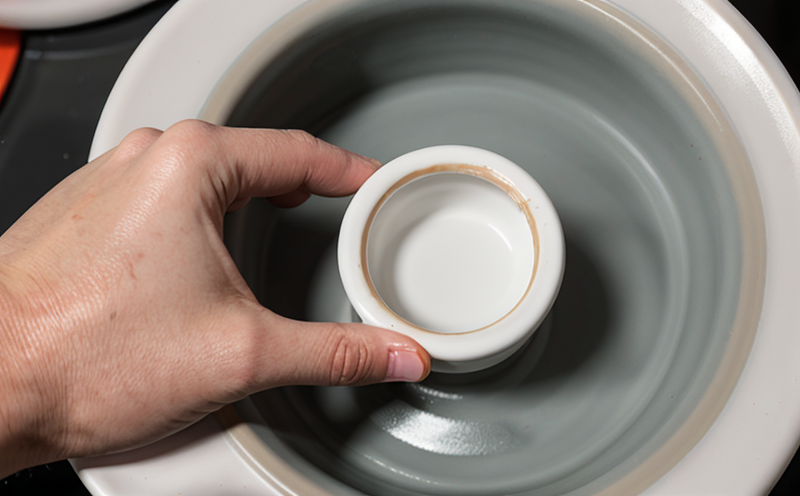ISO 26873 Grain Size Evaluation of Nanostructured Ceramics by Microscopy
The ISO 26873 standard provides a comprehensive methodology for evaluating the grain size in nanostructured ceramics, which is essential for ensuring product quality and consistency. This testing procedure focuses on achieving precise measurement and analysis through advanced microscopy techniques.
Understanding the microstructure of nanostructured ceramics is critical due to their unique properties and applications across various sectors such as electronics, energy conversion, catalysis, and biomedicine. The grain size directly influences these properties by affecting mechanical strength, thermal stability, electrical conductivity, and chemical reactivity.
The process outlined in ISO 26873 involves several key steps: specimen preparation, sample mounting, calibration of the microscope, image acquisition, measurement, and data analysis. Specimen preparation is crucial as it determines the quality of the final results. The standard recommends using techniques like mechanical grinding, chemical etching, or ion milling to expose the internal structure of the ceramic material.
Once prepared, the sample is mounted on a suitable substrate for microscopy. Calibration ensures accurate measurement by aligning the microscope's parameters with known standards. Image acquisition involves capturing high-resolution images that capture detailed information about grain boundaries and shapes. This step requires careful handling to avoid artifacts or distortions in the images.
The measurement phase uses specialized software tools designed specifically for grain size analysis. These tools automate the process of identifying individual grains, calculating their sizes, and categorizing them based on predefined criteria. Data analysis involves statistical evaluation of these measurements to determine compliance with specified limits set by industry standards or customer requirements.
Accurate grain size assessment is vital because it helps manufacturers ensure consistent product quality while also providing valuable insights into the processing conditions used during manufacturing. By adhering strictly to ISO 26873, laboratories can offer reliable and reproducible results that meet international standards and gain trust from clients worldwide.
To summarize, this service offers a robust approach to evaluating grain size in nanostructured ceramics using advanced microscopic techniques as per the internationally recognized ISO standard. It ensures precise measurement and analysis which are crucial for maintaining product quality and consistency across different applications.
- International acceptance of results
- Compliance with global standards
- Precision in measurements
- Consistency in reporting
Quality and Reliability Assurance
The implementation of ISO 26873 ensures high-quality grain size evaluation, thereby enhancing the reliability of nanostructured ceramics used in various industries. By adhering strictly to this standard, laboratories can provide clients with accurate and consistent data that meets international requirements.
One significant advantage is improved quality control during production processes. Manufacturers benefit from real-time feedback on material properties which allows for adjustments if necessary before the final product is released into the market. This proactive approach helps prevent defects early in the manufacturing cycle, reducing costs associated with rework or scrap.
In addition to internal benefits, there are also external advantages such as increased customer confidence and trust. When suppliers demonstrate their commitment to following established international standards like ISO 26873, they create a positive impression that can lead to long-term business relationships based on reliability and integrity.
The standard promotes transparency throughout the supply chain by establishing clear guidelines for testing procedures. This enhances traceability from raw materials through each stage of processing until the finished product reaches its intended destination. Traceability is important not only within individual organizations but also across different parts of the global market where compliance with international standards becomes increasingly relevant.
Furthermore, ISO 26873 supports continuous improvement by encouraging ongoing evaluation and refinement of testing methods based on best practices recommended by recognized bodies such as ASTM International or European Committee for Standardization (CEN). Regular updates to these standards reflect advancements in technology and scientific understanding which ensures that users remain at the forefront of innovation.
In conclusion, adhering to ISO 26873 promotes quality assurance efforts aimed at producing reliable nanostructured ceramics. It fosters trust among stakeholders by ensuring uniformity across all stages of production while supporting continuous improvement through rigorous evaluation processes.





